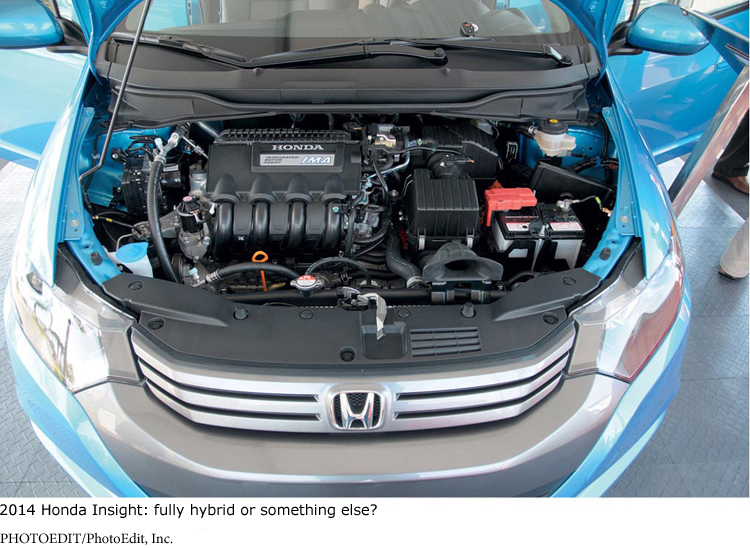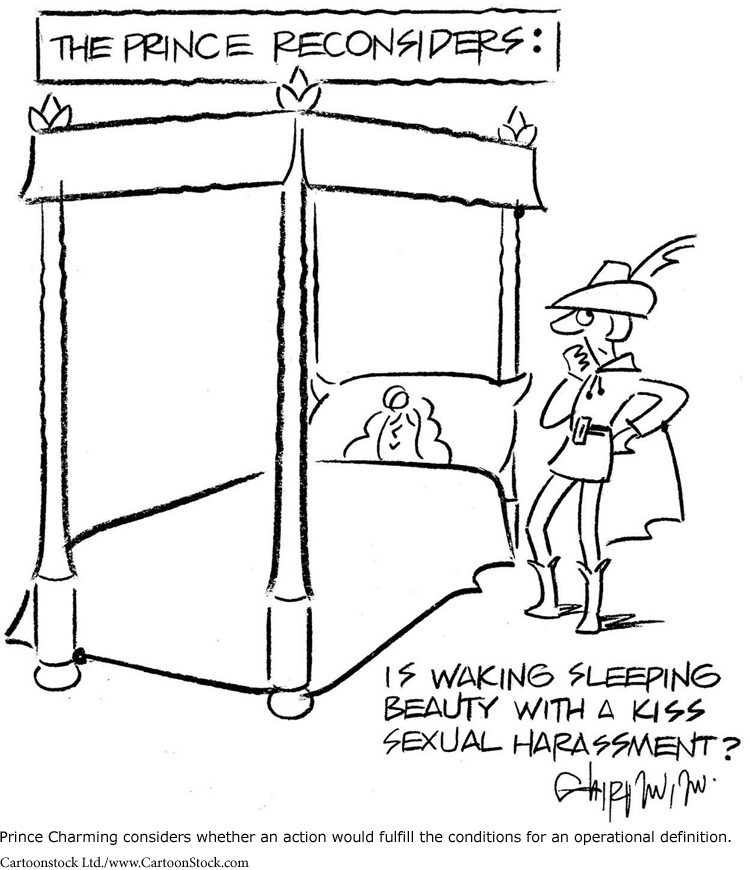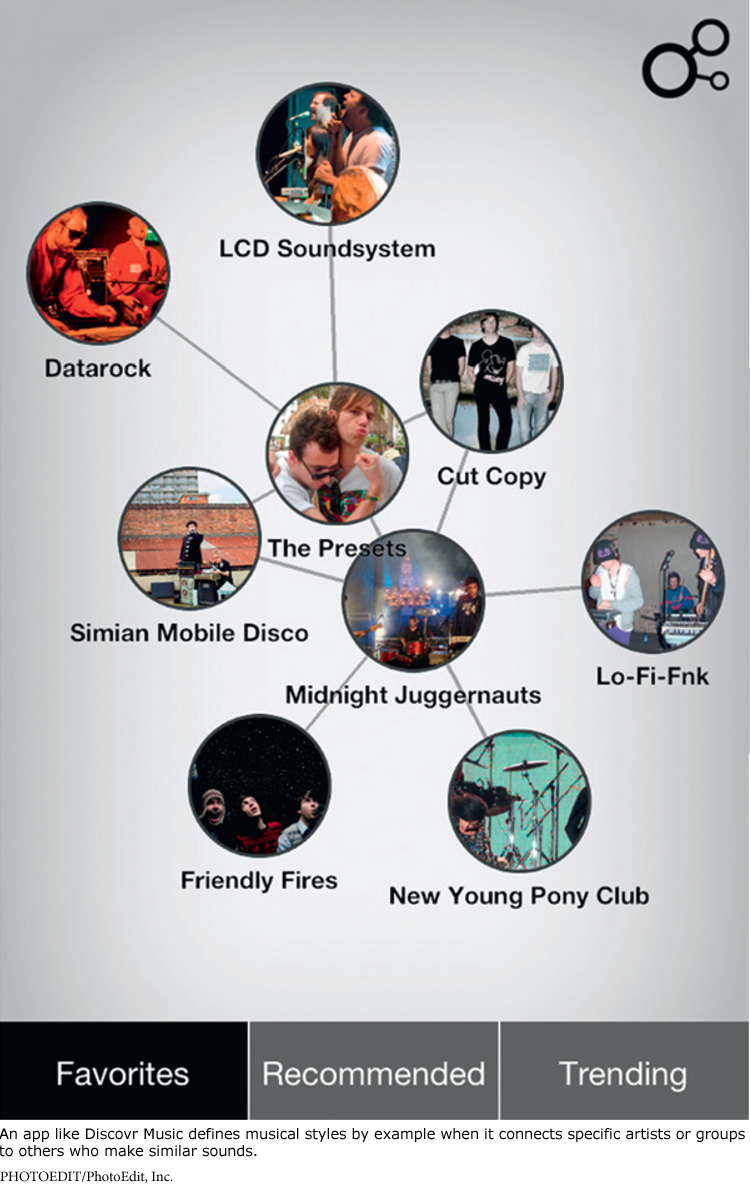Kinds of Definition
Kinds of Definition
Because there are different kinds of definitions, there are also different ways to make a definition argument. Fortunately, identifying a particular type of definition is less important than appreciating when an issue of definition is at stake. Let’s explore some common definitional issues.
Formal Definitions
Formal definitions are what you find in dictionaries. Such definitions place a term in its proper genus and species — first determining its class and then identifying the features or criteria that distinguish it from other members of that class. That sounds complicated, but a definition will help you see the principle. To define hybrid car, you might first place it in a general class — passenger vehicles. Then the formal definition would distinguish hybrid cars from other passenger vehicles: they can move using two or more sources of power, either separately or in combination. So the full definition might look like this: a hybrid car is a passenger vehicle (genus) that can operate using two or more sources of power, separately or in combination (species).
190
Many arguments involve deciding whether an object meets the criteria set by a formal definition. For instance, suppose that you are considering whether a Toyota Prius and a Honda Insight are comparable hybrid vehicles. Both are clearly passenger cars, so the genus raises no questions. But not all vehicles that claim to be hybrids are powered by two sources: some of them are just electrically assisted versions of a regular gasoline car. That’s the species question. Looking closely, you discover that a Prius can run on either gas or electric power alone. But does the Insight have that flexibility? Not quite. It has an electric motor that assists its small gas engine, but the vehicle never runs on electricity alone. So technically the Insight is labeled a mild hybrid whereas the Prius is called a full hybrid. This definitional distinction obviously has consequences for consumers concerned about CO2 emissions.

Operational Definitions
Operational definitions identify an object or idea by what it does or by what conditions create it. For example, someone’s offensive sexual imposition on another person may not meet the technical definition of harassment unless it is considered unwanted, unsolicited, and repeated. These three conditions then define what makes an act that might be acceptable in some situations turn into harassment. But they might also then become part of a highly contentious debate: were the conditions actually present in a given case? For example, could an offensive act really be harassment if the accused believed sexual interest was mutual and therefore solicited?
How does Amy Zimmerman’s piece “It Ain’t Easy Being Bisexual on TV” add complexity to and challenge typical culturally reinforced operational definitions of sexuality?
As you might imagine, arguments arise from operational definitions whenever people disagree about what the conditions define or whether these conditions have been fulfilled. Here are some examples of those types of questions:
Questions Related to Conditions
Can institutional racism occur in the absence of specific and individual acts of racism?
Can someone who is paid for their community service still be called a volunteer?
Can an offensive act be termed harassment if the accused believed sexual interest was mutual and therefore solicited?
Questions Related to Fulfillment of Conditions
191
Has an institution supported traditions or policies that have led to widespread racial inequities?
Was the compensation given to a volunteer really “pay” or simply “reimbursement” for expenses?
Should a person be punished for harassment if he or she believed the offensive action to be solicited?

RESPOND •
This chapter opens with several rhetorical situations that center on definitional issues. Select one of these situations, and then, using the strategy of formal definition, set down some criteria of definition. For example, identify the features of a photograph that make it part of a larger class (art, communication method, journalistic technique). Next, identify the features that make it distinct from other members of that larger class. Then use the strategy of operational definition to establish criteria for the same object: what does it do? Remember to ask questions related to conditions (Is a computer-scanned photograph still a photograph?) and questions related to fulfillment of conditions (Does a good photocopy of a photograph achieve the same effect as the photograph itself?).
Click to navigate to this activity.
Definitions by Example
192
Resembling operational definitions are definitions by example, which define a class by listing its individual members. Such definitions can be helpful when it is easier to illustrate or show what related people or things have in common than to explain each one in precise detail. For example, one might define the broad category of tablets by listing the major examples of these products or define heirloom tomatoes by recalling all those available at the local farmers’ market.
193
Arguments of this sort may focus on who or what may be included in a list that defines a category — classic movies, worst natural disasters, groundbreaking painters. Such arguments often involve comparisons and contrasts with the items that most readers would agree belong in this list. One could ask why Washington, D.C., is denied the status of a state: how does it differ from the fifty recognized American states? Or one might wonder why the status of planet is denied to asteroids, when both planets and asteroids are bodies that orbit the sun. A comparison between planets and asteroids might suggest that size is one essential feature of the eight recognized planets that asteroids don’t meet. (In 2006, in a famous exercise in definitional argument, astronomers decided to deny poor Pluto its planetary classification.)
